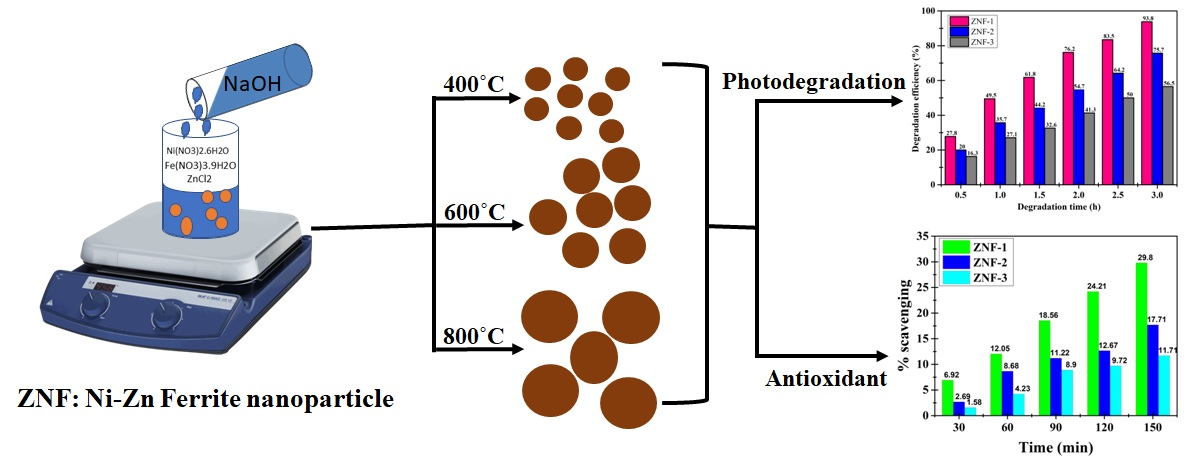Scientists have synthesized nanocrystalline Ni-Zn spinel ferrites (metal oxide with tetrahedral structure) with unique microstructural, optical and magnetic properties that can be used for data storage devices, tuning physical properties of materials as well as in photocatalytic and antioxidant applications.
Ni-Zn spinel ferrites are important materials in the area of electronics and electrical engineering due to their unique combination of electrical and magnetic properties.
A team of scientists from Institute of Advanced Study in Science and Technology (IASST), an autonomous institute of the Department of Science and Technology (DST), synthesized nanocrystalline Ni-Zn spinel ferrites which have a spinel cubic phase (face centred cubic symmetry) using chemical co-precipitation method. Since spinel cubic ferrites in nanoscale regime consist of optical bandgap (energy range in a solid where no electronic states exist) near the visible range, these nanomaterials qualify the requirements for becoming a promising photocatalyst.
Led by Prof. Devasish Chowdhury of the Physical Sciences Division of IASST, the scientists prepared nanocrystalline Ni-Zn ferrites of different particle sizes via the chemical co-precipitation method. They found that Ni-Zn ferrites particles of size below 20nm demonstrated superparamagnetic behaviour.
“Superparamagnetic” implies that the material behaves like a little magnet when you bring a magnet, but when you remove the magnet, it stops being magnetic on its own.
“Superparamagnetic property can be useful in various applications including in data storage devices where tiny magnetic particle can be switched between magnetic and non-magnetic to store and retrieve data,” said Prof. Chowdhury.
The team including research scholars Mr. Nur Jalal Mondal, Mr. Rahul Sonkar, Bitopan Boro and post-doctoral fellow Dr. Mritunjoy Prasad Ghosh, observed the size depended tuning of microstructural, optical and magnetic properties of the material.
The nanocrystalline Ni-Zn ferrites also demonstrated efficient antioxidant activities. It could capture and reduce the free radicals which are known to cause cell damage. In addition, the nanocrystalline Ni-Zn ferrites also demonstrated efficient photocatalyst in the photodegradation of methylene blue (MB) dye.
The study recently published in the journal Nanoscale Advances demonstrates that smaller-sized Ni-Zn spinel ferrites are efficient materials for tuning the physical properties and can be used in photocatalytic and antioxidant applications.
Link to publication: https://doi.org/10.1039/D3NA00446E
For more details, contact: Prof. Devasish Chowdhury, Physical Sciences Division, IASST (Mail ID: devasish[at]iasst[dot]gov[dot]in)































